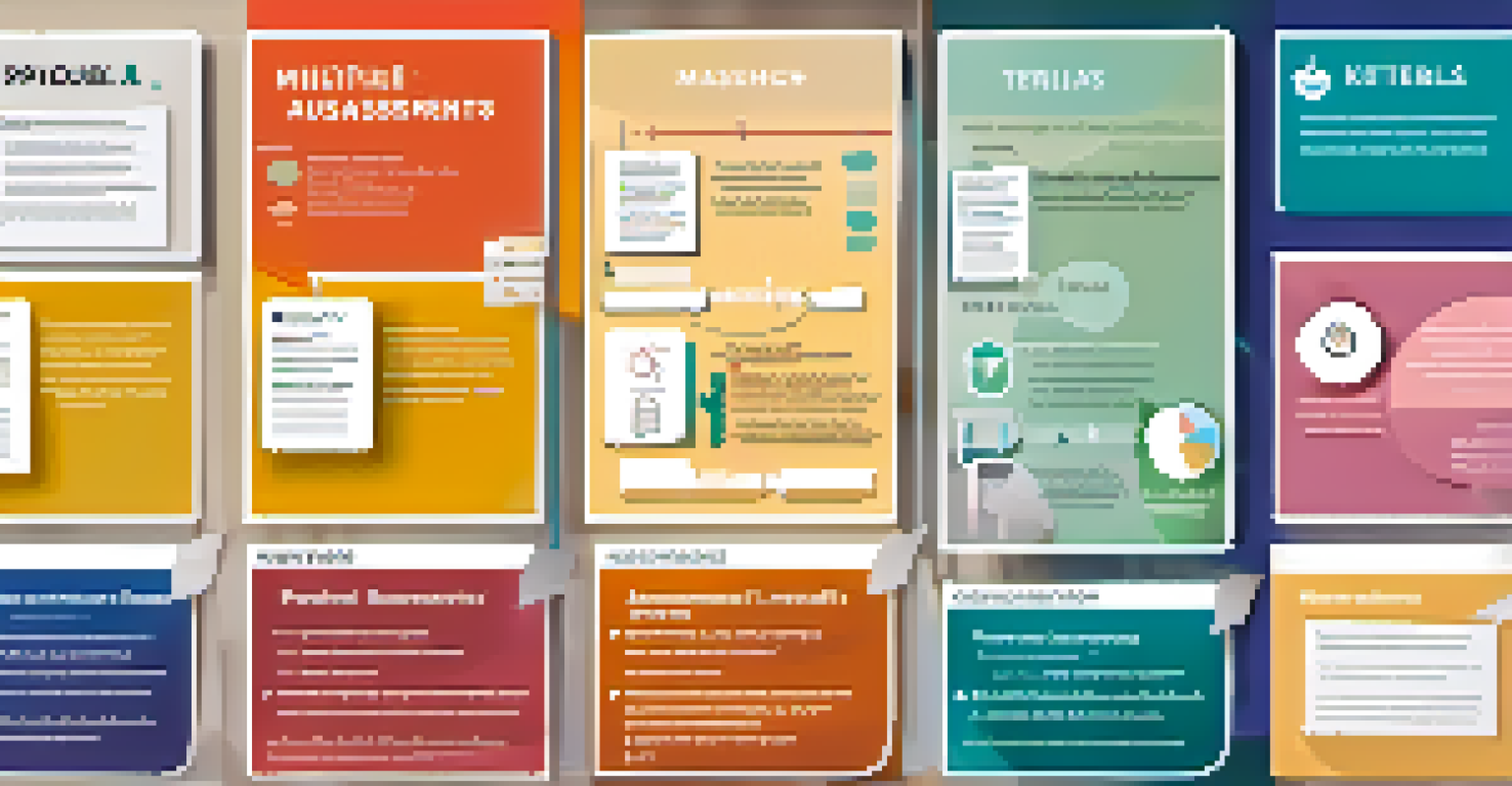Creating Effective Online Assessments for Student Learning

Understanding the Purpose of Online Assessments
Online assessments serve a critical role in measuring student learning. They provide insights not just into what students know, but also how well they can apply that knowledge. This understanding helps educators identify strengths and weaknesses in both teaching methods and student comprehension.
Assessment is the bridge between teaching and learning.
By clarifying the purpose of an assessment—be it formative or summative—educators can tailor their approach to better suit the learning objectives. For instance, formative assessments, like quizzes, can guide instruction in real-time, while summative assessments, like final exams, evaluate cumulative knowledge.
Ultimately, having a clear purpose allows for the creation of assessments that are not just tests, but valuable tools for growth and improvement, benefiting both students and educators alike.
Choosing the Right Assessment Tools and Formats
With a plethora of online tools available, selecting the right one can feel overwhelming. It's essential to consider the specific needs of your students and the goals of your assessment before making a choice. For instance, platforms like Google Forms are user-friendly for quizzes, while more complex simulations might benefit from specialized software.

Different assessment formats also play a significant role in the effectiveness of the evaluation. Multiple-choice questions can quickly gauge knowledge, while essays allow for deeper exploration of a subject. Mixing formats can provide a more comprehensive view of student understanding.
Ultimately, the right tools and formats not only enhance the assessment experience but also engage students in a way that promotes active learning and retention.
Creating Clear and Effective Assessment Questions
The heart of any assessment lies in its questions. Crafting clear, concise, and focused questions is essential to accurately gauge student understanding. Ambiguous or overly complex questions can confuse students and lead to inaccurate assessments of their knowledge.
Feedback is the breakfast of champions.
Consider using Bloom's Taxonomy as a guide when creating questions. This framework helps structure questions from lower-order thinking, like remembering facts, to higher-order thinking, like evaluating and creating. By incorporating various levels, you challenge students to think critically.
Moreover, providing examples or context can help students better understand what is being asked. Clarity in question design not only improves assessments but also enhances the overall learning experience.
Incorporating Diverse Question Types for Engagement
To keep students engaged, it's crucial to incorporate a variety of question types in your assessments. Mixing multiple-choice, short answer, and interactive elements like drag-and-drop can cater to different learning styles and preferences. This diversity can make assessments feel less monotonous and more engaging.
For example, using scenario-based questions allows students to apply their knowledge in real-world contexts, encouraging critical thinking. Similarly, including multimedia elements, such as videos or images, can enhance understanding and retention.
By diversifying question types, educators not only assess knowledge comprehensively but also promote a more dynamic and interactive learning environment.
Providing Timely and Constructive Feedback
Feedback is an essential component of the learning process, especially in online assessments. Providing timely and constructive feedback helps students understand their mistakes and learn from them. This immediate response fosters a growth mindset and encourages continuous improvement.
Utilizing automated feedback tools can streamline this process, allowing educators to focus on more personalized feedback for complex assessments. For instance, detailed comments on essay submissions can guide students on how to improve in future assignments.
Ultimately, effective feedback not only highlights areas for improvement but also reinforces what students did well, creating a balanced approach to learning.
Ensuring Accessibility and Inclusivity in Assessments
Creating assessments that are accessible and inclusive is crucial in today's diverse educational landscape. Consider the varied needs of your students, including those with disabilities, and ensure your assessments accommodate these differences. This might involve using screen-reader friendly formats or providing alternative assessments.
Additionally, offering assessments in multiple languages or providing resources for English language learners can create a more equitable environment. By fostering inclusivity, you allow all students the opportunity to demonstrate their knowledge and skills.
An inclusive approach not only benefits individual learners but also enriches the classroom experience, encouraging collaboration and understanding among peers.
Analyzing Assessment Data for Continuous Improvement
Once assessments are completed, analyzing the data is the next crucial step. This analysis provides valuable insights into student performance and can help identify trends or areas needing attention. By reviewing this data, educators can adjust their teaching strategies and refine future assessments.
For instance, if a significant number of students struggle with a particular topic, it may indicate a need for more focused instruction or additional resources. Conversely, consistently high scores might suggest that the material is too easy and needs to be more challenging.

Ultimately, using assessment data as a feedback loop allows educators to make informed decisions that enhance both teaching and learning experiences.